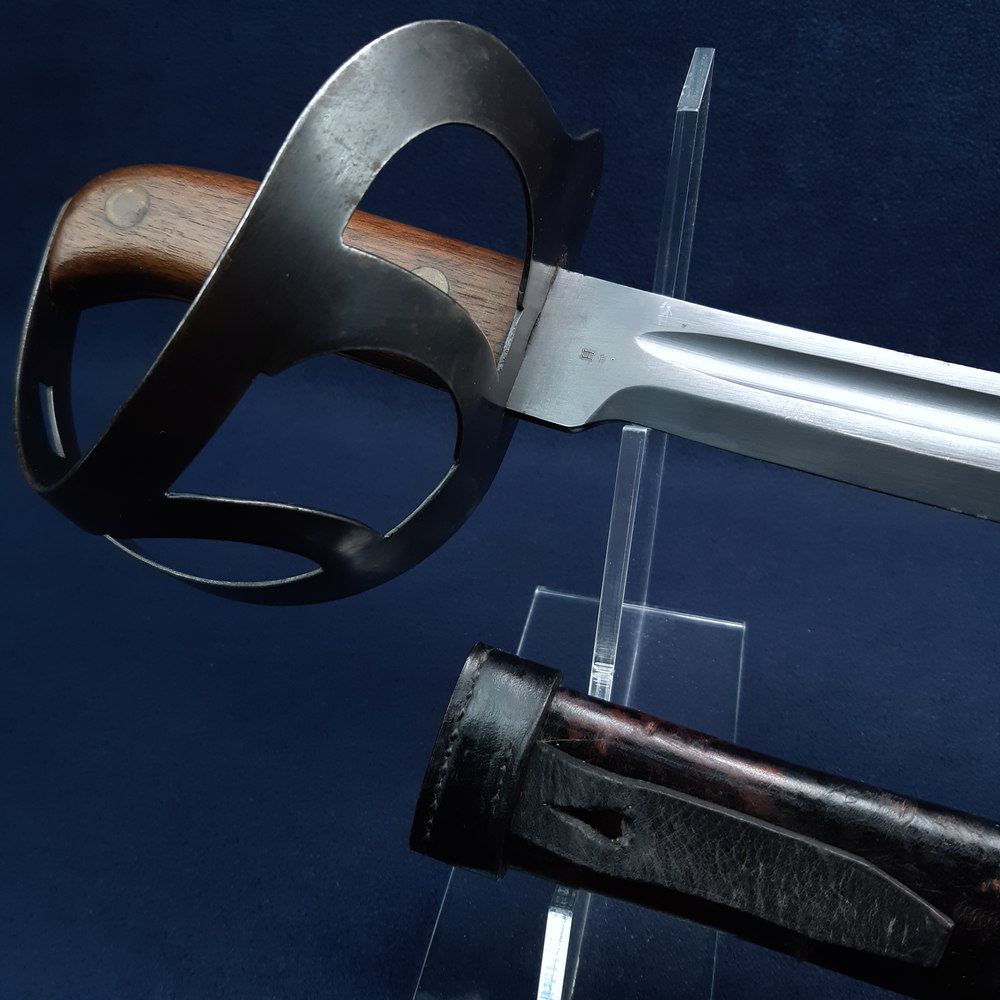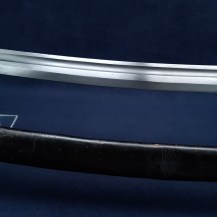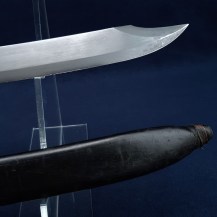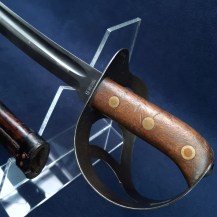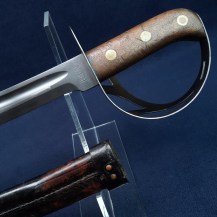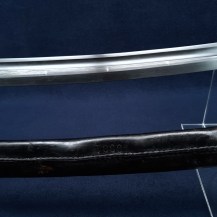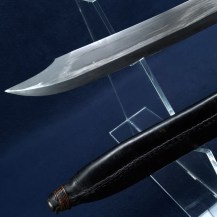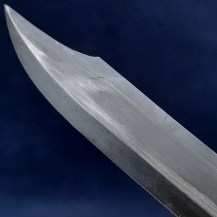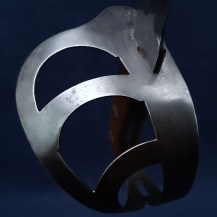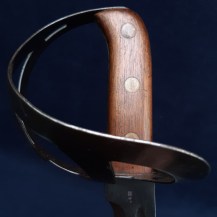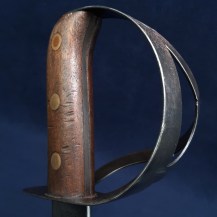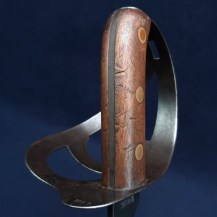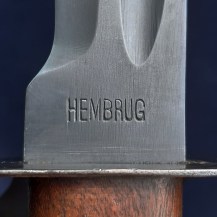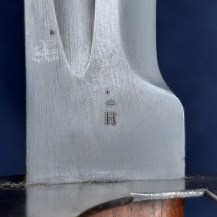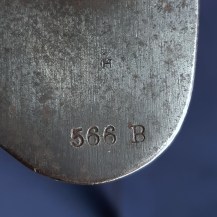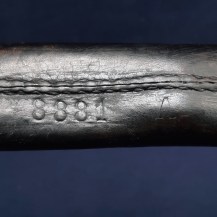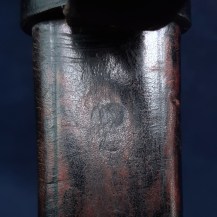Dutch M1911 Klewang / Marechauseesabel by Hembrug
Curved, single-fullered blade with clipped point, steel hilt with pierced openings to form side bars as well as a sword knot slit, wood slab grips secured with three brass rivets, exposed tang. Leather scabbard with riveted leather throat piece incorporating a frog strap, brass button chape reinforced with copper wire. Blade 24¾ inches in length, the klewang 29 5/8 inches overall.
The ricasso of the blade is stamped on one side with the maker’s mark ‘Hembrug’. Based in Zaandam, Holland, this manufacturer held the original Dutch contract for mass production of this pattern. It is stamped on the other side with a crown inspection mark.
The inside of the hilt is stamped with another crown inspection mark and the serial number ‘566 B’. The scabbard is stamped on one side next to the seam with the non-matching serial number ‘8881 A’ and stamped faintly on the body under the frog strap with what looks like ‘AD A’.
These swords were issued to Dutch colonial police and security forces, termed Marechausee, in the Dutch East Indies (now Indonesia). These units were founded in 1890 and deployed in a counter-insurgency role in the Acinese Wars that had been dragging on since 1873. The Acinese guerillas were expert jungle fighters and ambushers, and it was found that European sabers were too cumbersome for close quarters, unsuitable for cutting vegetation (requiring a second blade to be carried) and hard for locally-recruited auxiliaries to wield. The native Acinese 'klewang' blade was much more suitable, and was unofficially adopted very quickly by the troops.
Early designs for Marechausee klewangs used a European-style hilt with a local blade, or a European sword ground into a more suitable shape – these ideas were used to produce the first standardised klewang in 1898 on the principle of a light, short sword good for both combat and as a tool. This is the M1911, which was the first version to be produced in Europe rather than in the East Indies, and the first to contain all original parts, rather than using repurposed cavalry sword hilts, which were heavier and had a relatively thin tang.
Many klewangs were captured during WW2 by the Japanese during their occupation of the East Indies and converted into ‘Heiho’ blades – the blade was shortened and the guard almost completely removed to produce a machete-like tool for use in the jungle. This example survives in its original form as used by the Dutch.
The blade retains almost all of its original blueing, with a streak of wear on one side due to sheathing and drawing revealing bright steel, the only other notable spots of rubbing being at the tip and on the corners of the spine. A few small nicks to its edge. The hilt is likewise blued with some rubbing at its edges, some patination on the outside around the sword knot slit, spotted patination and rubbing wear overall on the inside. Some dents to the wood grips, no cracks or chipping. The brass rivets to the grip and scabbard have an even patina. The scabbard is in good condition, with its stitching intact and the leather strong with some flexibility; these did not always fare well in the humid climate they were used in. However, there is some bowing along the length of the scabbard and undulation on the surface of the seam side, that suggests the leather has slightly shrunk. Probably because of this, the klewang fits tightly in the scabbard – with patience and pressure it will sheath and draw, but take care.

